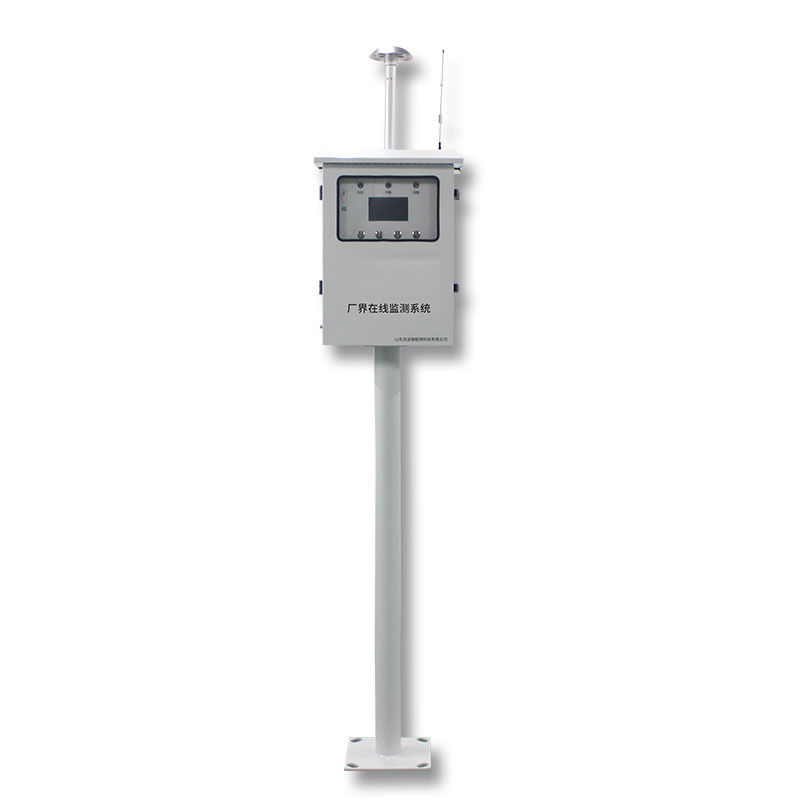Meteorological environment monitoring equipment supplier
Insist on doing high-precision customer favorite technology products
Odor gas detector is a device specifically designed for ambient air monitoring, primarily targeting locations prone to odor generation such as landfills, wastewater treatment plants, stationary pollution sources, and factory boundaries.
Odor gas detector is suitable for continuous monitoring of malodorous gases in ambient air, capable of simultaneously monitoring composite odor units (OU), total volatile organic compounds (TVOC), hydrogen sulfide, ammonia, and meteorological parameters such as temperature and humidity. As a multi-parameter online environmental monitoring product, it is designed for various complex odor gas detection environments, providing stable and reliable monitoring data.
In landfills, malodorous gases are often produced by the decomposition of organic matter, including components such as hydrogen sulfide and ammonia. Wastewater treatment plants also release volatile organic compounds and malodorous substances during wastewater treatment. Stationary pollution sources, such as industrial plants, may emit various odorous gases during production. Factory boundaries, as environmental boundary areas, require monitoring of odor dispersion to ensure surrounding air quality. Odor gas detector continuously monitors these uncontrolled emissions in real-time, helping managers to promptly understand changes in gas concentrations. The system can simultaneously detect multiple parameters: composite odor units (OU) are used for overall assessment of odor intensity, total volatile organic compounds (TVOC) cover a wide range of organic pollutants, and hydrogen sulfide and ammonia are common odor indicators. In addition, monitoring meteorological parameters such as temperature and humidity helps analyze the diffusion conditions and influencing factors of malodorous gases.
Odor gas detector adopts a multi-parameter integrated design, suitable for high humidity, dusty, or other harsh environments, ensuring stable operation even under complex conditions. Monitoring data can be transmitted in real-time through an online platform, facilitating remote monitoring and data analysis. In landfill applications, the system can monitor the peak concentrations of hydrogen sulfide and ammonia, and combined with temperature data, assess gas volatilization trends. At wastewater treatment plants, continuous monitoring of volatile organic compounds and composite odor units helps optimize treatment processes and reduce odor emissions. Monitoring of stationary pollution sources and factory boundaries prevents odor nuisance incidents and supports environmental compliance management.
The advantages of Odor gas detector lie in its comprehensiveness and adaptability. It can simultaneously handle multiple gases and meteorological parameters, and provide continuous data in uncontrolled emission environments. This system does not require frequent manual intervention, reducing operation and maintenance costs while improving monitoring efficiency. In practical applications, the system collects data in real time through a sensor array, analyzes changes in gas concentration using algorithms, and outputs visual reports. For example, in factory boundary monitoring, the system can detect the source and diffusion path of malodorous gases, helping to implement control measures. In landfills, monitoring data can be used to evaluate the effectiveness of cover layers or ventilation systems.
In short, Odor gas detector is an efficient environmental monitoring tool designed specifically for locations prone to generating odors. Its multi-parameter monitoring capabilities allow it to handle various complex environments, providing support for environmental management and pollution control. The system's continuous monitoring function ensures the timeliness and accuracy of data, helping to improve air quality and reduce the impact of odors on public health. With increasingly stringent environmental regulations, this system will be more widely used in areas such as waste treatment, sewage treatment plants, stationary pollution sources, and factory boundaries, becoming an important component of environmental monitoring.
